How Often Does It Snow In Nova Scotia?
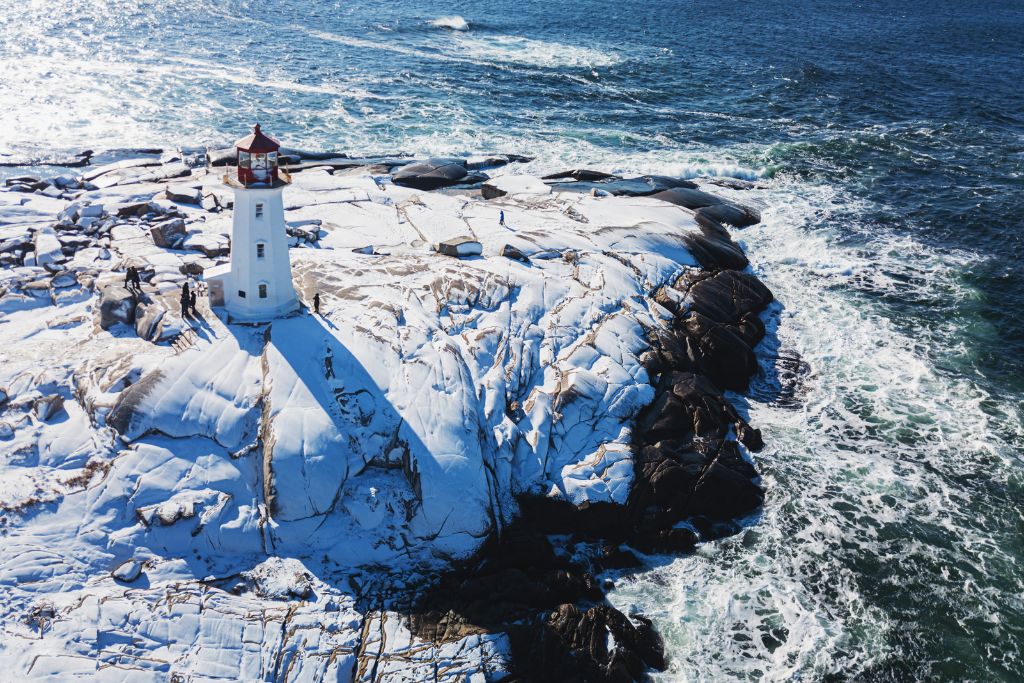

Wondering How Often It Snows In Nova Scotia? Keep Reading To Find Out!
If you’re considering a visit during the colder months or simply curious about this maritime province’s climate, you might be asking: Does it actually snow in Nova Scotia?
From coastal cities like Halifax to the scenic highlands of Cape Breton, the snowfall varies across regions, adding unique seasonal charm to each area.
In this post, we’ll dive into what winter weather looks like in Nova Scotia, the amount of snow you can expect, and how it impacts everything from outdoor activities to travel plans.
Whether you’re dreaming of snowy landscapes or holiday festivities, this guide has all you need to know about Nova Scotia’s snowy season!
Does It Snow In Nova Scotia?
Yes, snow is a common part of Nova Scotia’s winter, with snowfall occurring each year, particularly in December, January, and February.
The snow brings a beautiful winter landscape, but it can also vary significantly in quantity and consistency across the province.
Coastal areas, like Halifax, receive less snow than inland regions due to the moderating effects of the Atlantic Ocean.
Which often results in milder temperatures and occasional rain mixed with snow.
In contrast, areas like Cape Breton and other higher elevations experience more frequent and substantial snowfall, creating a winter wonderland effect in these regions.
How Much Does It Snow In Nova Scotia?
The amount of snowfall in Nova Scotia can vary widely depending on the location.
On average, Halifax receives around 150 cm (about 59 inches) of snow each winter.
Meanwhile, areas further inland or at higher elevations, such as the Cape Breton Highlands, can receive significantly more, often exceeding 300 cm (around 118 inches) annually.
Also, snowfall amounts depend on the year, as some winters are much snowier than others due to fluctuating weather patterns.
Snowstorms do occur, bringing substantial snowfall in a short period, although snow usually melts quicker in the coastal areas due to milder temperatures and occasional rain.
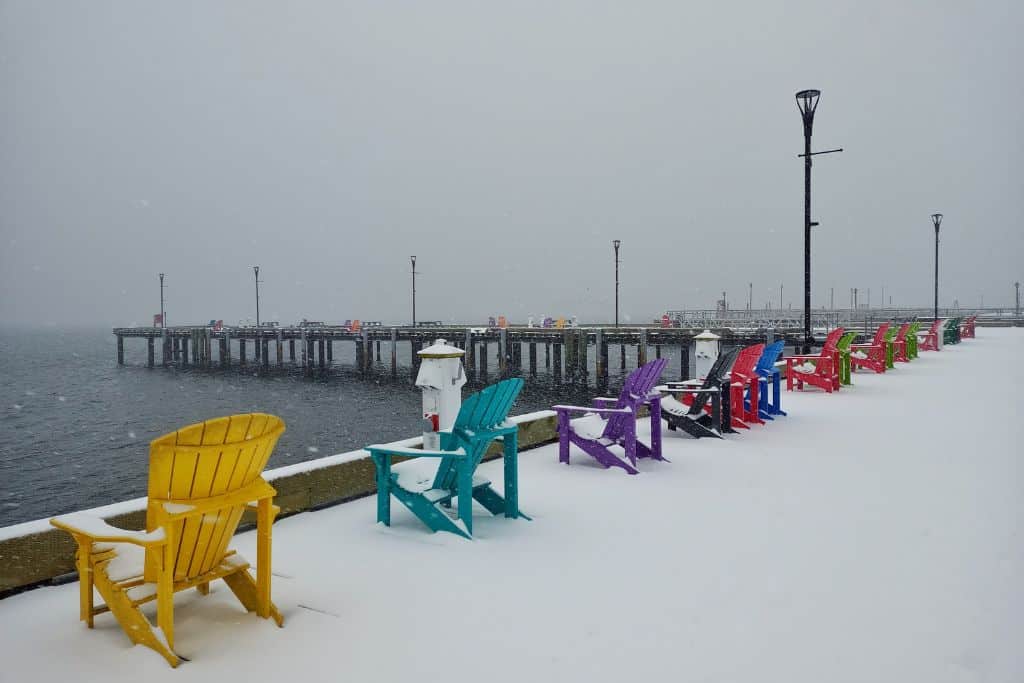
When Does It Snow In Nova Scotia?
Snow in Nova Scotia typically begins in late November or early December and lasts until March or early April.
January and February are the snowiest months, with the most consistent snowfall and colder temperatures.
However, it’s not unusual to see some snowfall in April, especially in inland or northern areas.
Winters in Nova Scotia are often punctuated by warm spells that can bring rain or melting periods.
Which means snow cover may not be continuous on the coast.
Inland areas, by contrast, retain snow for longer periods, especially through mid-winter.
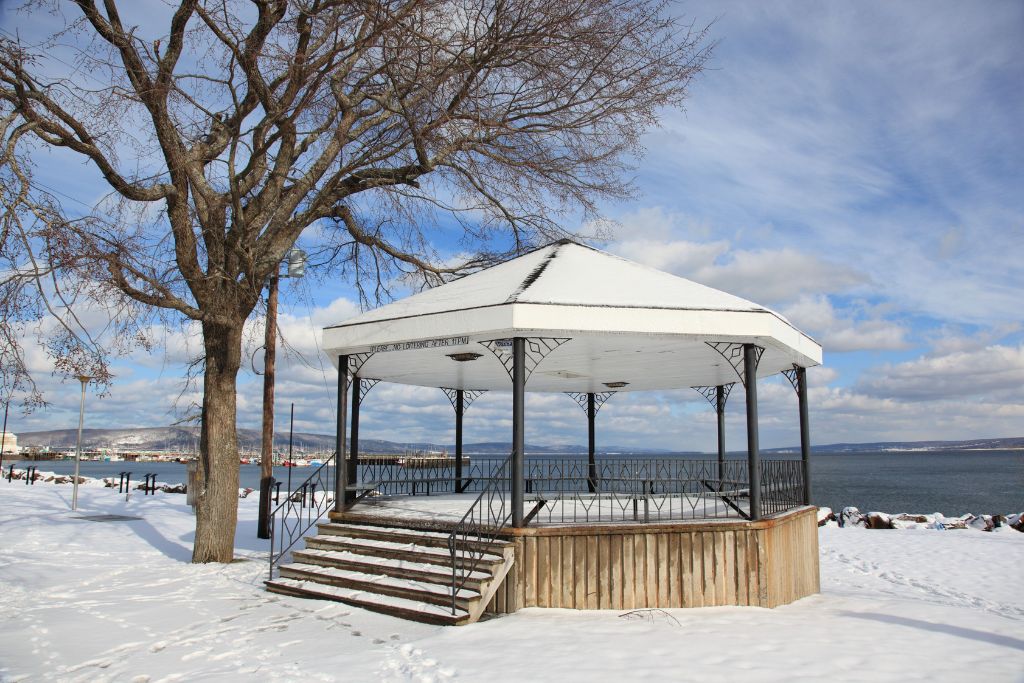
How Cold Is Nova Scotia In The Winter?
Nova Scotia’s winter temperatures are relatively moderate compared to other Canadian provinces, thanks to the influence of the Atlantic Ocean.
Coastal areas, such as Halifax, see average winter temperatures ranging from -7°C to 0°C (19.4°F to 32°F).
However, temperatures can dip below -10°C (14°F) during cold snaps, and wind chills make it feel even colder, especially near the coast.
Inland and higher elevation areas experience colder temperatures, with averages often dropping to -15°C (5°F) or lower.
Snowy and windy conditions can make it feel colder across the province, so dressing warmly is essential when venturing out in Nova Scotia’s winter months.
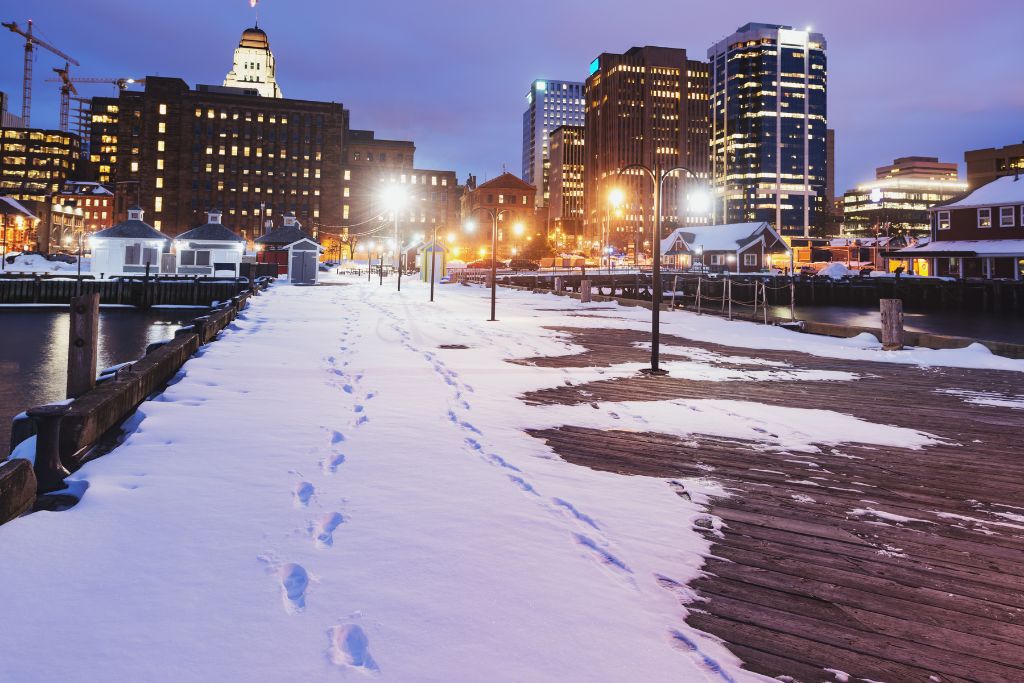
What To Wear When Visiting Nova Scotia In The Winter
When visiting Nova Scotia in the winter, dressing warmly and in layers is essential due to the region’s cold temperatures, wind, and frequent snow.
Here’s a guide to staying comfortable and prepared for winter activities in Nova Scotia:
Thermal Base Layers: Start with moisture-wicking thermal layers to keep warm and dry. A long-sleeve thermal shirt and thermal leggings make a great base and help insulate your body without adding bulk.
Insulating Layers: Add a warm sweater or fleece over your base layer. This layer traps heat and keeps you comfortable during those brisk winter days. Wool or fleece works best for retaining warmth and can easily fit under a jacket.
Waterproof, Insulated Jacket: A good winter coat is essential. Opt for an insulated, waterproof, and windproof jacket to protect against both snow and cold winds. An insulated jacket with a hood is ideal for keeping your body warm and dry.
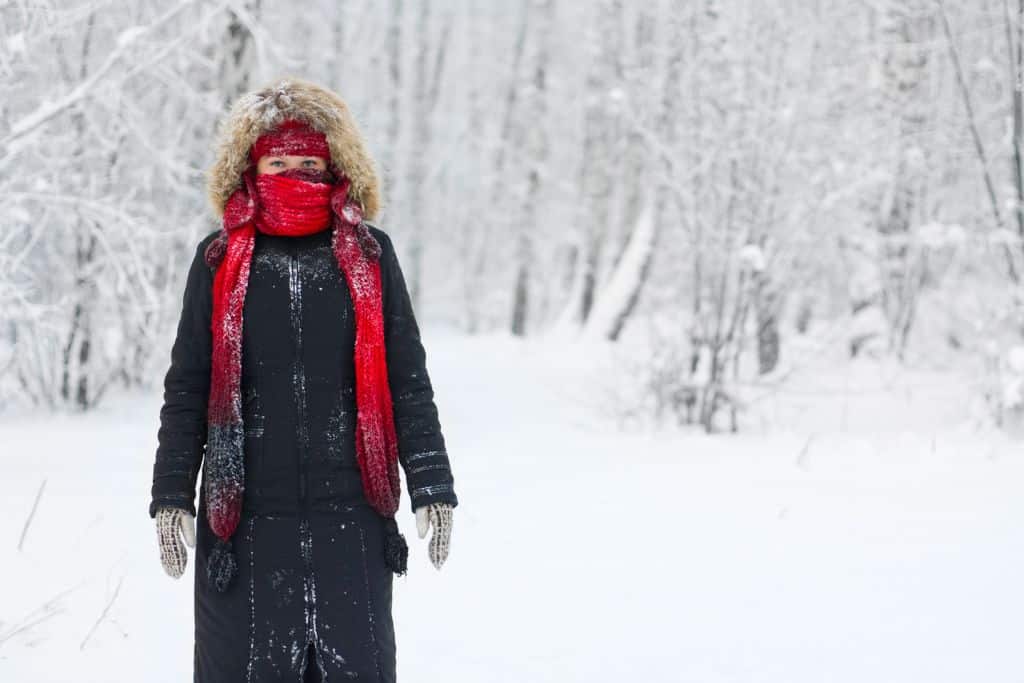
Waterproof Boots with Good Traction: Winter in Nova Scotia means snow, slush, and potentially icy conditions. A pair of waterproof boots with good traction will keep your feet dry and prevent slipping on icy or snowy surfaces. Insulated boots with wool or synthetic liners add extra warmth. I like a brand called Sorel.
Accessories: Don’t forget warm accessories like a hat, gloves, and scarf. A wool beanie will help retain heat, while insulated gloves or mittens keep hands warm. A scarf can be wrapped around your neck to protect against cold winds, especially near the coast.
Warm Socks: Layering thermal or wool socks can prevent cold feet, especially when spending long periods outside. Wool socks are especially effective at keeping feet warm and dry.

5 Fun Things To Do In Nova Scotia In The Winter
Nova Scotia transforms into a winter wonderland, offering unique activities and seasonal delights.
Here are five fun and detailed ways to embrace winter in this scenic province:
1. Explore Skiing & Snowboarding at Wentworth
Nova Scotia’s Ski Wentworth offers some of the best slopes in the Maritimes, making it a favorite spot for winter sports enthusiasts.
The mountain has over 20 trails ranging from beginner to expert, making it suitable for all skill levels.
Wentworth features equipment rentals, lessons, and a cozy lodge to relax between runs.
With breathtaking views of the Cobequid Hills, skiing or snowboarding here is a scenic experience.
Also, it’s close to charming small towns, so you can warm up with local treats or cozy up in a nearby B&B after a day on the slopes.

2. Hike or Snowshoe Cape Breton’s Highlands
Cape Breton Highlands National Park is a must-see year-round, but winter brings an extra sense of tranquility to this dramatic landscape.
Strap on some snowshoes or crampons to hike trails like the Skyline Trail, where you might spot snow-covered forests and views of the Gulf of St. Lawrence.
Keep an eye out for winter wildlife, including moose and bald eagles, and enjoy the peacefulness of this winter retreat.
Snowshoe rentals are available at certain trailheads, and guided tours offer safe navigation and added historical context.
Be careful when you drive in the winter as the roads are windy.
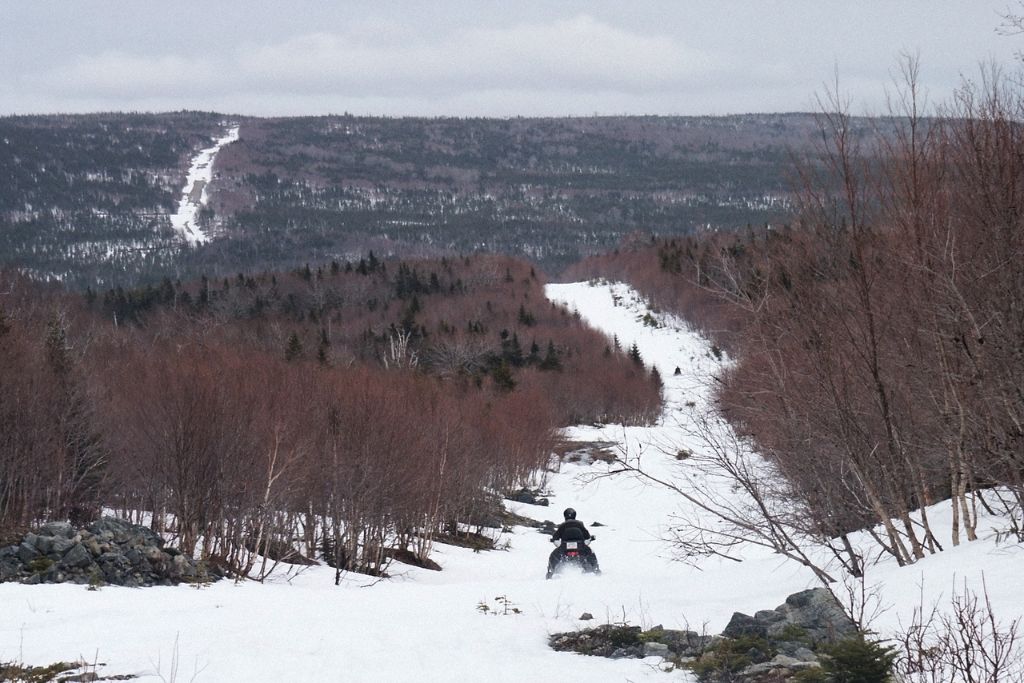
3. Visit the Halifax Waterfront Ice Rink
Skating at the Emera Oval on Halifax’s waterfront is an ideal winter experience.
This large outdoor skating rink offers free skating and equipment rentals, so it’s accessible to everyone.
The waterfront area, decorated with festive lights and seasonal decor, is especially inviting.
After your skate, warm up with hot chocolate or snacks from nearby cafes, or explore Halifax’s local winter markets and pop-up shops.
Also, the Halifax waterfront is home to occasional winter events, like live music performances, making it an ideal spot to soak in the city’s winter spirit.

🦄 If you are looking for more helpful content about Halifax, check out these blog posts:
10 Fun Things To Do In Halifax For Adults
Is There Uber In Halifax?
What Are People From Halifax Called?
This Coastal Town Near Halifax Is A Must Visit
Is Halifax A Walkable City? + Most Walkable Neighborhood
4. Attend Winter Festivals and Events
Nova Scotia has several unique winter festivals that showcase the province’s rich culture and friendly communities.
The Lunenburg Folk Harbour Society Winter Concerts bring live music to warm up the cold nights.
While Yarmouth’s Icewine Festival pairs local wines with culinary delights in a festive setting.
Halifax’s Winter Carnival offers ice sculptures, fire pits, and family-friendly activities, and New Year’s Eve celebrations bring fireworks to kick off the year with a bang.
Each event is an opportunity to experience Nova Scotian culture, meet locals, and celebrate winter.

5. Take a Coastal Road Trip to See Frozen Seascapes
Nova Scotia’s coastline is famously scenic, but winter adds a layer of magic to its shores.
Drive along the South Shore or Cabot Trail for views of icy cliffs, frosty waves, and snow-covered lighthouses.
Peggy’s Cove is particularly enchanting in winter. With its rugged rocks coated in ice and fewer visitors to disrupt the peaceful atmosphere.
Stop along the way to explore small villages, enjoy cozy seaside cafes, and photograph the striking contrast of snow against the Atlantic.
This winter road trip lets you take in the beauty of Nova Scotia’s coast in a way that feels serene and unique to the season.
👉 Book this Peggy’s Cove tour that runs in the winter: From Halifax: Peggy’s Cove Small-Group Tour with Transfers

FAQs: How Often Does It Snow In Nova Scotia?
Let’s take a look at some of the most frequently asked questions when it comes to how often it snows in Nova Scotia.
Is Halifax warmer than Toronto?
Halifax is generally warmer than Toronto in the winter due to its coastal location on the Atlantic Ocean.
The ocean acts as a natural temperature regulator, keeping Halifax’s winter temperatures milder than Toronto’s, which experiences more extreme continental cold.
While Toronto often sees frigid temperatures and significant snowfall, Halifax’s winters tend to be more moderate, though the city does experience cold weather and some snow.
However, Halifax’s coastal climate can bring more rain and a damp chill, making it feel colder than the temperature might suggest.
So, while Halifax might have warmer winters compared to Toronto, the maritime climate means visitors should still prepare for chilly, sometimes wet conditions.
🦄 If you need more helpful information about Toronto, check out these blog posts:
10 Best Toronto Hotels By CN Tower
Complete Guide To Visiting Casa Loma, Toronto 2024 (From A Local)
12 Fun Activities To Do In Toronto For Adults (From A Local)
Does It Snow In Toronto (From A Local)
How To Get To The Rogers Centre In Toronto (From A Local)?

Does Nova Scotia have 4 seasons?
Yes, Nova Scotia experiences all four seasons, each bringing unique weather and scenery to the province.
Spring sees a gradual warm-up from winter’s chill, with blossoming flowers and temperatures ranging from cool to mild.
Summer in Nova Scotia is typically warm. With temperatures often reaching 20–25°C (68–77°F), and the coastal areas stay cooler due to the ocean breeze.
Fall is marked by vibrant autumn foliage and mild weather. Making it a popular season for scenic drives and outdoor activities.
Winter brings cold temperatures, especially inland, with snow and occasional coastal storms. Even though it tends to be milder compared to some other parts of Canada.
These seasonal changes give Nova Scotia a rich variety of activities and landscapes to explore year-round.

Which part of Nova Scotia has the best weather?
The South Shore of Nova Scotia, particularly the area around Lunenburg, Mahone Bay, and the Annapolis Valley, tends to have the best weather in the province.
This region benefits from a more temperate climate due to its proximity to the Atlantic Ocean.
Which helps moderate the extreme temperatures found in other parts of the province.
If you’re looking for the best weather in Nova Scotia, the South Shore offers a mix of pleasant summer warmth, mild winters, and a more moderate climate year-round compared to the rest of the province.

🦄 If you are looking for more helpful content about the Maritimes, check out these blog posts:
What Is Special About Hopewell Rocks, New Brunswick?
Is Fredericton A Walkable City? Guide To Getting Around The City
Is Charlottetown Worth Visiting? Things To Do & Reasons To Visit
Meridian63° Luxury Camping Review
15 Best Places To Visit In Canada In December
Conclusion: How Often Does It Snow In Nova Scotia?
In conclusion, yes, it does snow in Nova Scotia, and snowfall is a defining feature of the province’s winter season.
While the amount of snow varies depending on the region, coastal areas like Halifax and the South Shore experience milder winters with less snow compared to inland areas.
The Cape Breton Highlands and other northern regions can receive significant snowfall.
Regardless of where you visit in Nova Scotia, winter provides a picturesque landscape.
Whether you’re enjoying the snowy views, participating in winter sports, or exploring the cozy charm of the province during the colder months, winter is a great time to visit.







